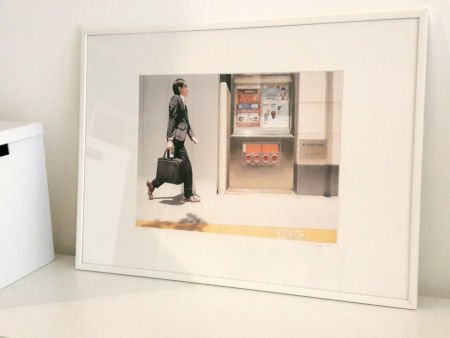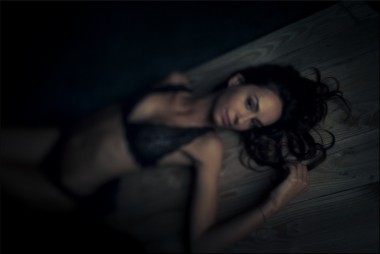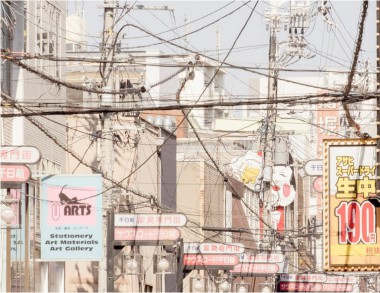About Jérôme Liegeois
Jérôme Liégeois is a Marseilles artist whose preferred medium is photography.
For Jérôme Liegeois, photography is not a passion: "it is a priesthood" a way of life. He takes his photos with silver, medium format, digital, polaroid sx7O.
In 2013, Jérôme Liegeois' work on fashion photography was the subject of a beautiful retrospective at the Alter Ego Gallery in Aix. In 2016, he was invited to present the series "reasoning of volumes" at the Arles meetings, then the series "epidermis du territoire" (Marseille, 2017).
Recently, Jérôme Liegeois was very successful during his exhibition organized by the Francony Gallery, where he exhibited his latest series "Les Nyctalopies", a magnificent series between strolling and initiatory travel in the heart of the city of Osaka.

He learns photography by himself when he is a teenager, then improves his skills at the age of 20 with the editorial staff of newspapers that commission reports from him. As a photojournalist, he worked with news agencies for about ten years and in 2003 he left this activity to open his own studio in the Old Port.
It is thanks to the practice of applied photography (the studio) that he then turns to fashion and advertising and without leaving aside his orders, it is naturally that his personal creations take over. He strives to create series of artistic photographs, freely without the constraint of commissions, letting his inspiration guide him in an obsessive way.

Sources of inspiration
My sources of inspiration come from writers Yasunari Kawabata, Haruky Murakami, Bret Easton Elis, surrealist painters and photographers Joan Foncuberta, Roger Ballen, Zhang Kechun. Minimalism and haikus also feed me.
Preferred themes
Despite my photographic peregrinations, I always return to my favourite themes of the epidermis and the territory represented by women and landscapes. I am committed to disrupting the links between what can be several realities.
I create doubt about the truth of photography. Hypotheses are therefore likely on the same photo.
The methods
For me, a photo is the transcription of a very personal feeling. I try to understand why I prefer to take this picture rather than another, and this leads to introspective reflections. This leads me to erase the previous work and eventually lead to a coherent corpus that finalizes a project.
The different ways of photographing each other as good as the next allow me to use digital, silver, polaroid and all possible transformations and DIY. Staying manual is essential for me, even in digital.
Sometimes I use my insomnia to make my body travel through the mind and collect soothing visions. I then use these imaginary wanderings to think about my photographs, which I make in a state close to somnambulism. With this device, I raise the question of physical or imaginary displacement.

The nyctalopies
In his series "nyctalopies", Jérôme Liegeois works on selective memory, on what the brain chooses to forget or retain.
It results in his photos, a subtle feeling of travel through his memory. Overexposure limits the visibility of superfluous elements, the chromatic palette varies and only graphic shapes and bright colours dominate in a cottony atmosphere.
The style
I try not to fit into boxes by raising several hypotheses in my images instead. I try to disrupt the links that can be several different realities in the same photograph. To quote Iroshi Sugimoto's horizon photographs, the first men on earth had exactly the same reality in front of them as we have today without anything having changed. I like this idea of timelessness.
Nyctalopies
I imagined for a long time while I was trying to fall asleep on this trip to Osaka that I had been planning for months. I was evolving my mind in the little that I already knew through the tourist guides.
One morning, I woke up in a capsule room, I had really projected my body into a distant city. The memory of my dream faded as the seconds went by. I was wondering how the body selects what we retain and what we forget.
I intended to become master of my memory, to decide what I would remember and what I would forget from this journey.
I strolled along the boulevards around the buildings with glazed facades that reflected the sun and suppressed drop shadows. It was as if the sun was stagnating at its zenith. Graphic shapes and bright colours mixed in a cottony atmosphere. In this general overexposure, I could see almost nothing.































